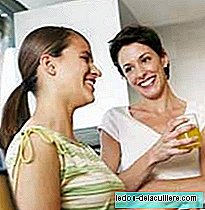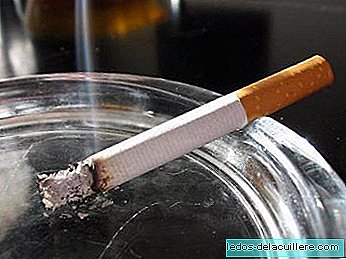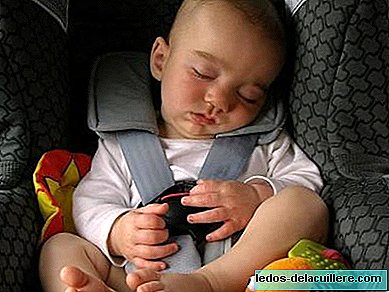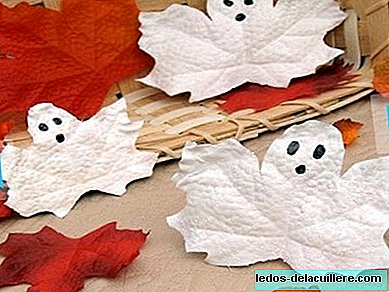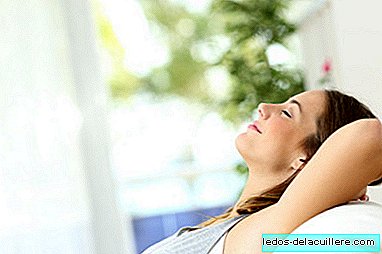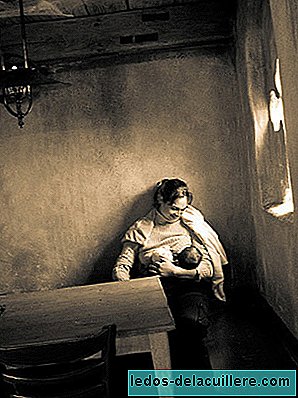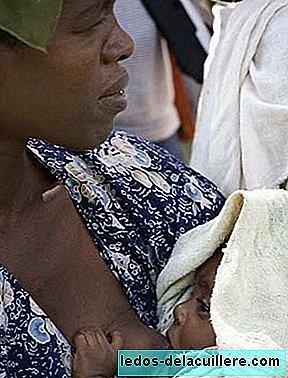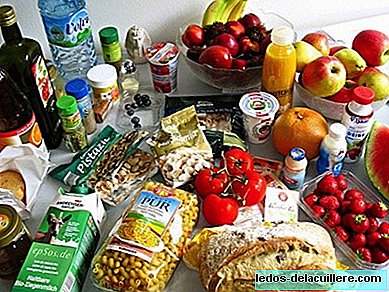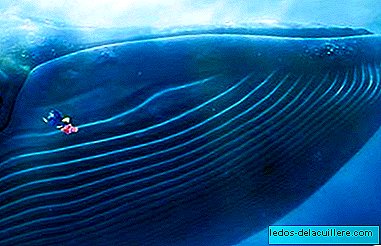
We will continue with our science workshop and we will also continue with water as the basis of our experiments. Today we will propose new scientific experiences that, with few materials and in a simple way, you can do at home with your children.
Speaking "whale"
We know that the sounds are diffused differently depending on the medium in which they are transmitted, but for children it can be a discovery and, in addition, it will allow them to apply this knowledge to the explanation of some phenomena that they themselves can feel or to be introduced into the behavior of animals.
We are going to use two balloons, water, our lungs and a table. We will fill one of the balloons with air, closing it with a knot. We will repeat the operation but this time we will fill it with water in the tap.
Next we have to put both balloons on a table and encourage the child to put the ear first on one and then on the other. We will hit the table with the knuckles and ask the child to tell us through which of the balloons the sound comes best.
We can then repeat the experiment in the bathtub. First the child will get inside while the bathtub is empty and we will tap on the outside with the knuckles. Then, with the bathtub full and the child diving in it we will do it again.
Sound is best transmitted in the water. The conclusion is clear but surely the child will need an explanation to understand the reason, but we can always let him make his working hypothesis to see if he can think of any logical answer, without harassing it, of course, if he can't think of anything.
Let us tell you then that all matter, even the invisible and gaseous, is made of tiny bits more or less tight to each other depending on the substance and its state. In gases, like air, we tie them down, which is what those little pieces are called, they are very far apart and when the sound pushes them, not everyone gets to touch and transmit that vibration, it is movement. In the water, they are tighter, and therefore they can hit each other and transmit it better and further, although they do it differently and we perceive them more serious and distorted. The explanation, which we could expand and improve with older children, will be adequate and children of four, five or six years will begin to assimilate.

The answer is in the marbles
To exemplify the process we can do it visually and we will find the answer in the marbles.
For that we will need lots of marbles scattered on the table. The marbles will represent the atoms. First we will put some very separate ones and we will weakly hit one end with a ruler. The marbles will move in the direction in which we hit them but as they are separated they will not hit them all and in the end there will be some that will not reach. Then, putting them closer together, we will repeat the operation and see how they hit each other more, transmitting the movement to the farthest ones more easily.
When we see a book or a documentary about whales, or the great movie of "Finding Nemo", we are going to look at the song of the whales, we will tell them that they are able to listen to thousands of kilometers when they speak thanks to this characteristic of the transmission of sound in the liquid medium, and in the end, we will surely end when we go the pool speaking in "whale" and laughing trying to understand what the other said.

The shape of invisible things
In this experiment we will show the children that those little invisible parts that matter is made of are different from each other and have different forms although we cannot see them. We are going to make the experimentation show us.
We will need large marbles and very small marbles, two jugs with built-in measurements or two large specimens, water and alcohol.
We will start filling the two jugs with 50 cubic centimeters of water each. We will ask the child how much water there will be if we collect them. If the child knows how to add, he will tell us that 100 cubic centimeters, if he does not know, surely if he is able to understand that there will be twice the amount. We will pour the water in one of them and write down the measurement.
Then we will repeat the experiment the same with alcohol. The sum will also be 100 cubic centimeters, twice the volume.
Next we will fill a test tube with 50 cubic centimeters of water and the other with 50 cubic centimeters of alcohol. The "logical" thing would be that also, when brought together, it reaches 100. But it will not be that way, we will carefully look at the marks and the total amount will be somewhat smaller, about 97 cubic centimeters. Where has the missing gone?
The answer is in the marbles again.
Again we will find the answer in the marbles. We are going to fill the two specimens now with large marbles up to 50 cubic centimeters and we will gather them by measuring how far they reach, which will be at 100 cubic centimeters.
Then, we will do it with the little ones, and they will also reach 100 cubic centimeters when we join them.
But when we put together a test tube with 50 cubic centimeters of large marbles and another with 50 cubic centimeters of small marbles the result, again, will surprise us, because they will not reach 100. But this time we are not working with atoms of water or alcohol, but with visible marbles and we can verify the reason why they do not reach the expected volume: small marbles are housed in the interstices between large marbles, making the final height line smaller.
The explanation is now visual and understandable.. The invisible atoms of our two initial liquids have different sizes and for that reason their mixture has obtained a slightly smaller volume than the pure mixtures. They will be amazed at the experience and they will have discovered with a simple experiments that things are different from what we can see with the naked eye and that those little bits of matter that we call atoms behave like our marbles but at an invaluable level to our eye.
These two water experiments, which, of course, we must perform carefully so that there are no dangers and always being in charge of handling, will make the science workshop bring children to the mysteries of nature with guaranteed fun. There will be more.
In Babies and more | Science workshop: experiments with water (I), Science workshop: experiments with eggs, Summer science workshop: water, balloons and soft drinks, Science workshop: snack for small scientists


